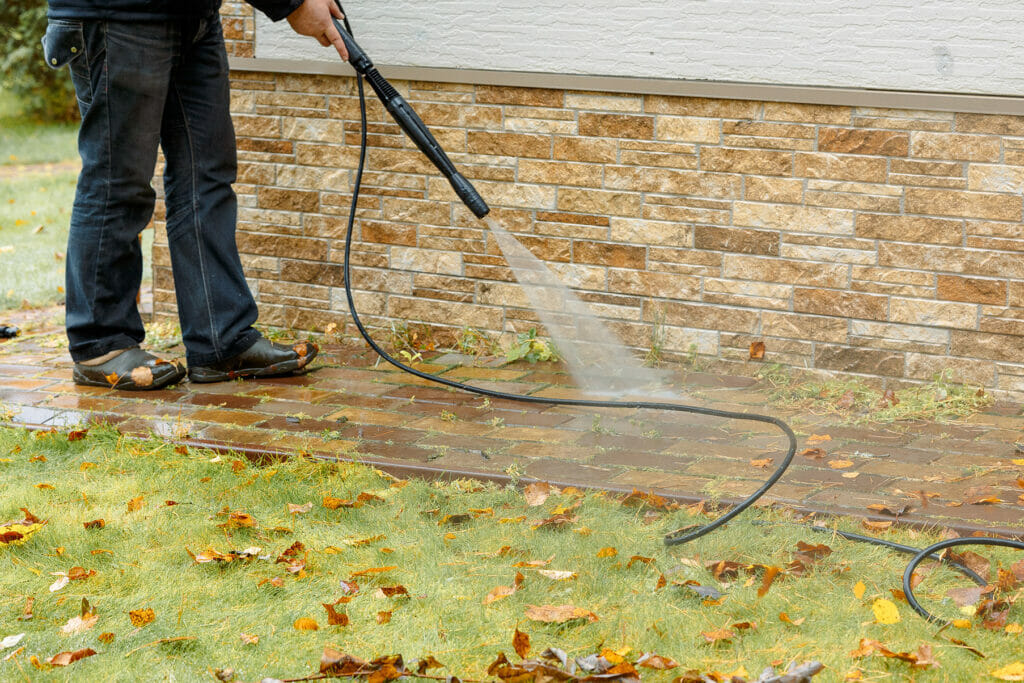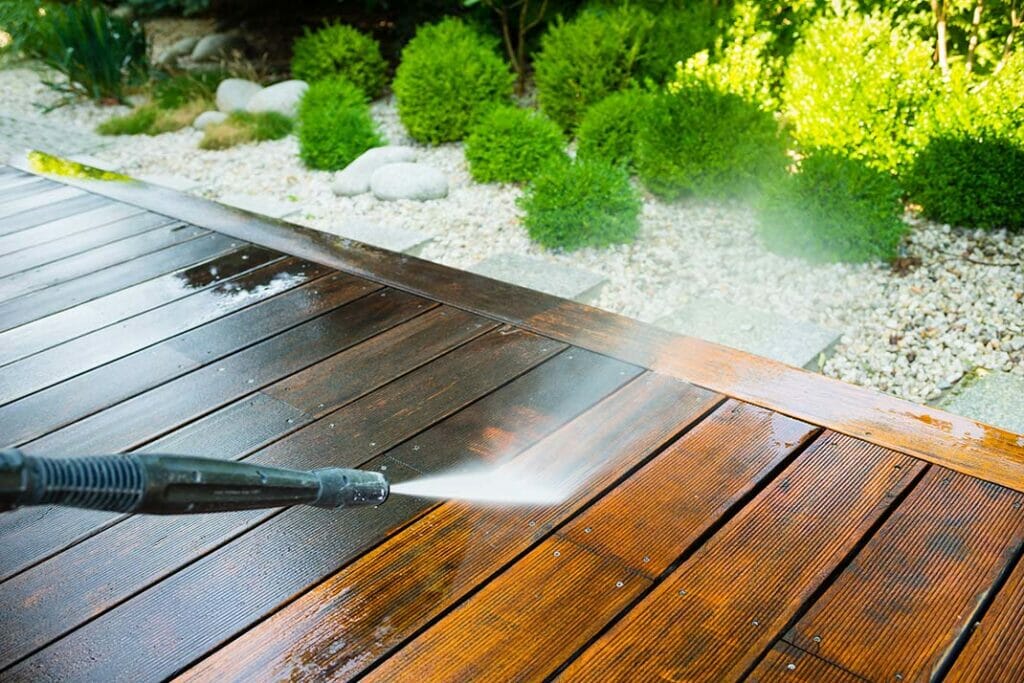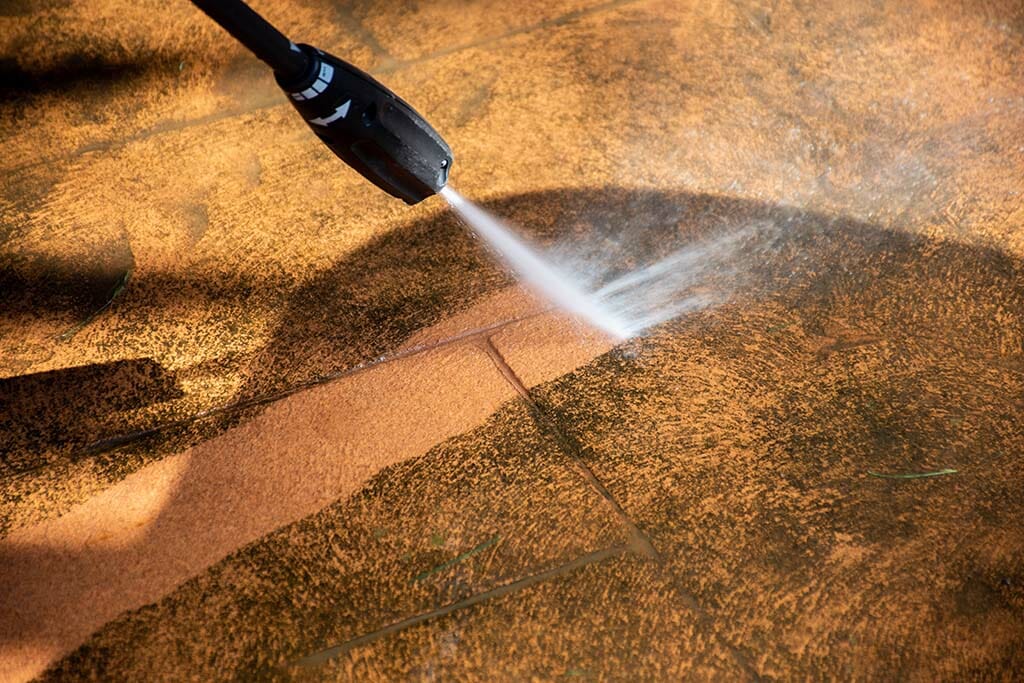
Diving into the world of home maintenance, pressure washing stands out as a powerful tool for revitalizing the exterior of your home. This method, essential for removing dirt, debris, and mildew, can significantly enhance your home’s curb appeal and longevity.
Understanding how to pressure wash a house involves recognizing the technique’s ability to deeply clean various surfaces, from siding and driveways to decks and patios, ensuring your home exterior remains in pristine condition.
When it comes to selecting a pressure washer, the choice between electric and gas-powered models is pivotal. Electric pressure washers offer convenience and are ideal for smaller, less intensive tasks due to their quieter operation and lack of emissions.
On the other hand, gas models pack more power, making them suited for tackling larger areas and more stubborn grime. Evaluating your specific needs, including the size of your home and the types of surfaces you plan to clean, will guide you in choosing the type of pressure washer that best fits your home maintenance goals.
Before unleashing the power of your pressure washer, adequate preparation is key to a successful and safe cleaning process. Starting with turning on the water supply ensures a steady flow for your washer.
Securing windows, doors, and other vulnerable areas with duct tape can protect against accidental water damage. These preliminary steps not only safeguard your property but also streamline the cleaning process, allowing for a more efficient and effective pressure washing experience.

When embarking on a pressure washing project, prioritizing safety is paramount. The power of high-pressure water can pose risks, particularly when cleaning near power lines or while standing on a ladder. To mitigate these risks, proper safety gear, including goggles and gloves, is essential to protect against flying debris and high-pressure water streams.
Moreover, when working near electrical hazards or at heights, additional precautions, such as using a non-conductive extension wand and ensuring ladder stability, are crucial to prevent accidents and ensure a safe cleaning environment.
Initiating the pressure washing process begins with a thorough understanding of your equipment. Connecting your pressure washer to the water supply and securely attaching all hoses and fittings is the first step.
Once connected, turning on the pressure washer involves following the manufacturer’s instructions to ensure it operates correctly. Familiarizing yourself with the machine’s functions, including the on/off switch and pressure adjustment controls, sets the foundation for an effective and efficient cleaning session.
The versatility of a pressure washer lies in its ability to adjust water pressure to suit various cleaning tasks. High-pressure settings can effectively clean hard surfaces like concrete and brick without causing damage. Conversely, softer surfaces, such as wood decking or painted exteriors, require a lower pressure setting to avoid harm.
Recognizing the appropriate pressure level for each area ensures that cleaning enhances rather than damages your home’s exterior, making it crucial to consult your pressure washer’s guide or a professional to determine the optimal settings for your specific cleaning needs.

A key aspect of effectively using a pressure washer is mastering the adjustment of water pressure and choosing the correct spray angle for various cleaning tasks. For tough, resilient surfaces like concrete and brick, a high-pressure setting coupled with a 15-degree spray nozzle can strip away stubborn grime efficiently without causing damage.
On the other hand, softer surfaces, such as wood decking or painted exteriors, benefit from a gentler approach, employing a lower pressure setting and a 40-degree spray nozzle to clean without inflicting harm.
Understanding and applying the appropriate pressure level and spray angle for each specific area of your home’s exterior is essential. It ensures that your cleaning efforts enhance the appearance and integrity of the surface rather than degrade it. Always refer to your pressure washer’s manual or seek advice from a professional for optimal settings tailored to your cleaning projects.
For a thorough and effective pressure washing session, adopting efficient cleaning patterns is crucial. Moving the spraying wand side to side, starting from the top and gradually moving downwards, ensures consistent coverage and prevents streaking.
Utilizing an extension wand is particularly beneficial for reaching high or difficult areas safely, without the need for a ladder. Additionally, focusing on small areas one at a time allows for more detailed cleaning and ensures that no section is overlooked.
These methodical patterns not only enhance the cleaning process but also save time by avoiding the need for repeated passes over the same area.
Certain areas of your home’s exterior may exhibit stubborn dirt and debris that standard pressure settings cannot remove. In these cases, increasing the water pressure and using specialized nozzles can provide the additional force needed to dislodge and remove tough grime.
For particularly resistant areas, applying a detergent before pressure washing can help break down the dirt, making it easier to rinse away. It’s important to approach these areas with care, adjusting the pressure and distance as necessary to avoid damaging the surface.

After addressing the dirt and debris, turning on the water to rinse the area is a critical final step. Using a lower pressure setting, methodically rinse off any loosened dirt and cleaning solutions from the surface, working from top to bottom to prevent drips and streaks on cleaned areas.
Once the rinsing is complete, it’s essential to review your work thoroughly, looking for any missed spots or areas that may need a second pass. This final inspection ensures that your home’s exterior is uniformly clean and that your pressure washing efforts have achieved the desired results.
Recognizing when to call in professional pressure washing services is crucial for ensuring both safety and optimal results. While DIY pressure washing can be effective for small, manageable tasks, larger projects or those involving high or difficult-to-reach areas might necessitate the expertise of a professional painting company like BCI.
Professionals have the tools, safety gear, and skills to handle pressure washing tasks safely and effectively, preventing damage and injuries. When dealing with tough stains, mold, or tricky locations like near power lines or on unstable surfaces, it’s smart to rely on experts for a thorough and safe cleaning job.
After revitalizing your home’s exterior with a thorough pressure wash, maintaining that newfound cleanliness and aesthetic appeal is paramount. Regular maintenance not only extends the life of your pressure wash but also protects your home’s exterior surfaces from the elements.
Regularly check for and promptly deal with mold, mildew, or dirt to avoid frequent deep cleaning. Trim vegetation around your home for better air circulation and less moisture. Consider seasonal pressure washing based on dirt exposure to preserve your home’s beauty and integrity.
Ready to rejuvenate your home’s exterior but unsure where to start? Contact BCI for professional pressure washing services that ensure your home looks its best.